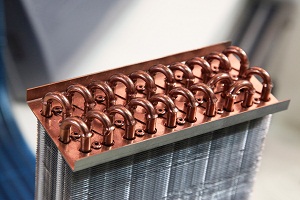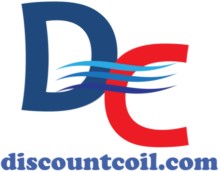 Inspection of shell and tube heat exchangers are outlined in ASME Code. Heat exchangers have their own inspection requirements although the framework applies to both heat exchangers and regular pressure vessels. Any heat exchanger tube bundle repair has to be inspected as part of the overall heat exchanger inspection process. Here is a general guideline.
Inspection of shell and tube heat exchangers are outlined in ASME Code. Heat exchangers have their own inspection requirements although the framework applies to both heat exchangers and regular pressure vessels. Any heat exchanger tube bundle repair has to be inspected as part of the overall heat exchanger inspection process. Here is a general guideline.
Tube
Every aspect of the tube should be inspected before building the tube bundle. This includes thickness, ovality, inside and outside diameter. Acceptance tolerances are outlined in ASME Section II.
Tube Bundle
Tube bundle dimensions have to match the approved drawing, including baffle diameter and distances between them. Stay bolts and spacers and shell cleanliness must be verified. All inside welds have to match the thresholds laid out in the drawing. This must be done under normal situations and after heat exchanger tube bundle removal and replacement. A good rule of thumb is to schedule an inspection as soon as possible after heat exchanger tube bundle replacement.
Tubesheet
This has to be inspected before being welded to the shell and the inspection must cover thickness and surface finish measurements, drilling patterns, hole diameter and grooves dimensions. Each must be checked against acceptance tolerances.
Tube Rolling
Tube rolling alignment must meet customer specifications; wall reduction should not be less than five percent or more than eight percent of tube wall thickness.
Leak Testing of the Seal Weld
The shell side of the weld should be put through an air pressure test with a water and soap solution sprayed on the tubesheet to detect any leaks or deficiencies.
Shell Side Hydrostatic Testing
Once the manufacturing process is complete, the shell side must be hydrostatic tested according to the value in the approved drawing. Holding times should match recommendations from the supplier approved testing procedure. Gauge pressure should be within 1.5 to 4 times testing pressure and all welds and seems should be inspected as well as the tubesheet. No leakage is allowed.
When that is verified, the test pump hose should be disconnected with no pressure decrease.
Tubeside Hydrostatic Testing
Upon shell side testing completion, assemble bonnets and begin testing the tube side hydrostatically. Testing pressures should match the approved drawing; all other requirements match the shell test and no leakage or pressure decrease masteron steroid benefits should happen while the tube side is under pressure.
While this inspection is necessary after any heat exchanger tube bundle repair, it is important to also to scheduled inspections after any scheduled maintenance. Unscheduled maintenance or repair must be followed by a full inspection.
